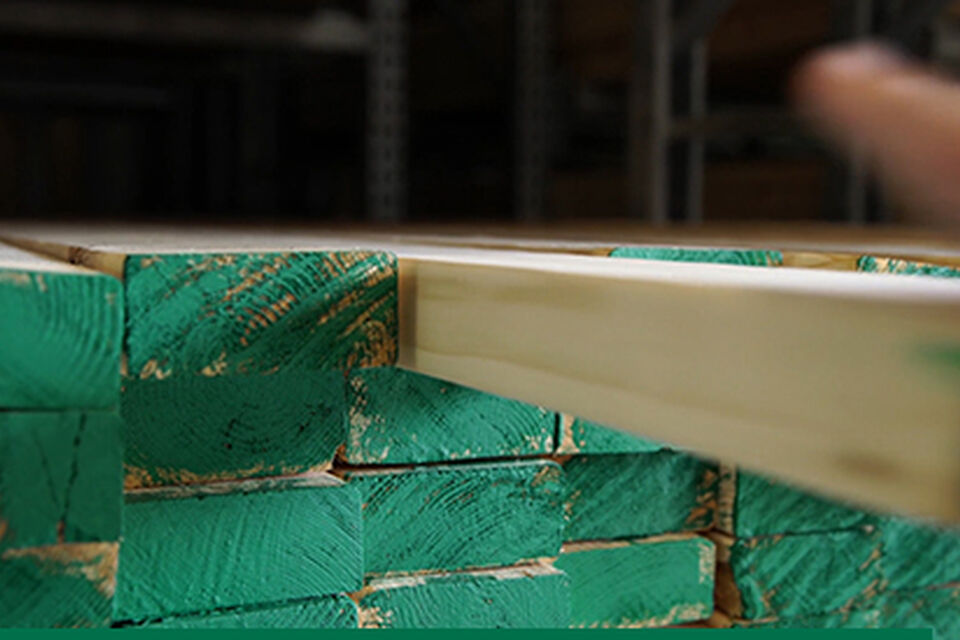Since our last report, a few situations developed that disrupted supply and sent the lumber market at once soaring and back again. In Canada, railway blockades set up by members of the First Nation Tribe had a profound effect on the sale of Canadian framing and plywood exports to the United States, essentially freezing the supply channel overnight. Set up along the Canadian National and Pacific Railways throughout Canada in protest of a natural gas pipeline being constructed through their tribal lands, their efforts effectively shut down rail transportation for almost three weeks, severely impacting their ability to move goods and enable trade to the United States. After intervention from the Canadian police, lines were opened back up but, by that point, there was a backlog of hundreds of trains and their cars that needed to be moved. As fuel and perishables took precedence, lumber and plywood sat on the tracks and, as a result, key building materials from the West Coast and Canada quickly became in short supply as replenishing orders had an indeterminate arrival.
Closer to home, a partial wall collapse on the Pan Am Hoosuc Tunnel (a 4.9 mile rail tunnel and key artery to New England supply located in North Adams, Massachusetts) interrupted rail to our local reloads and distributors as trains had to be rerouted north and south until it was repaired. With winter on hiatus this year and a strong construction climate (housing starts at 1.6 million, the highest they have been since 2006), the market reacted sharply as buyers scrambled to cover their immediate and future needs, sending prices soaring.
And then it all changed again as the growing effects of the spread of the coronavirus and its subsequent negative impact on the stock market (as a result of the fears and controls enacted to contain the virus) rattled consumers and buyers enough to put a quick damper on a lumber market that was in the process of exploding. As the world digests, observes, and changes behavior in the face of this pandemic, there appears to be a new strategy to follow and that is to take it day by day and buy what you need. Despite what’s gone on in recent weeks, as of print the lumber market remains active, prices are relatively firm and the industry as a whole is moving ahead to the best of their ability. We anticipate that it will remain this way for as long as conditions
allow it.
With market volatility comes price volatility. With commodities, the price is typically good for as long as you have them on the phone. With non-commodities, price changes are usually scheduled so there is typically an opportunity to buy defensively against an increase before it happens. However, all of that changes when a crisis arises (and there’s nothing like fear to stoke a crisis). Much like the recent run on hand sanitizer and face masks (or like milk, bread, and batteries before a hurricane), when demand suddenly supersedes supply on regular everyday common products, all bets are off and the pricing strategy can instantly turn to whatever price the seller can get for it. It’s no different in our industry. We’re at the mercy of the market for lumber and plywood pricing (it changes daily) but other items will typically have stable pricing until some event suddenly makes them a hot commodity. Although it is not uncommon for manufacturers to announce immediate price increases that they intend to pass on due to their situation with materials, labor, and transportation, it’s our relationships with them and their distributors that helps us clip out the peaks of these increases.
Our best relationships are the ones where our suppliers know our usage and buying habits, anticipate what our future needs will be, and work to protect us from price spikes by giving us the opportunity to use manners which minimize their impact. Overall, they work on our behalf to help us to be the best supplier to you, our customer. Conversely, our best relationships with our customers work the same way. We have the same mission to help you be the best contractor that you can be. True partnerships work on behalf of wanting each other to succeed. When markets become volatile, it’s even more important to exercise that partnership. Our goal is to protect you from supply and pricing issues (so that you can carry on with your job commitments and stay on budget), which is why we will not implement immediate price increases or shorten the expiration periods of your quotes. During times of volatility, we take extra care to react rationally and will work with our suppliers through the issue. Because of this, we hold the confidence that we have bought the right product at the right price, and at the right time, and can protect our commitments to our customers and their future needs.
This year, despite its issues, has certainly gotten off to a good start and there appears to be a good enough momentum and work in the pipeline to keep us going strong for the near future. Please know that we are here to serve you and will gladly address any questions or concerns you may have regarding the market and how it may affect your project. On behalf of all of us here at Shepley, we thank you for your past, current and future business and are truly honored to be your partners!
